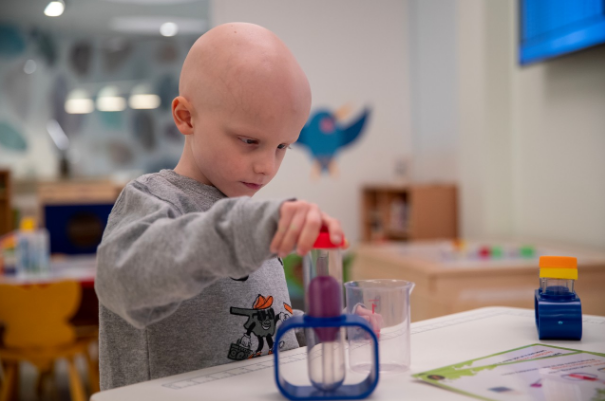**St. Jude Imagine Academy by Chili’s: 25 Years of Supporting Students Through Healing**
MEMPHIS, Tenn. — For 25 years, the St. Jude Imagine Academy by Chili’s has been a lifeline for young patients, ensuring that education remains a vital part of their healing journey at St. Jude Children’s Research Hospital. Accredited as a Special Purpose School by Cognia, the Imagine Academy supports students from preschool through high school as they undergo treatment for cancer, sickle cell disease, and other life-threatening illnesses.
Unlike traditional hospital schooling, the Academy works closely with each child’s home school. This partnership keeps students on track both academically and emotionally during their treatment.
> “Part of advancing long-term health and well-being is ensuring that patients are able to continue to grow academically while undergoing treatment,” said **Alli Leslie**, head of the Imagine Academy. “Education is a cornerstone of a healthy future, and we want all of our students to be able to fulfill their dreams.”
**Personalized Support for Every Student**
Every new patient at St. Jude is offered an educational consultation to assess their academic needs. The Imagine Academy has 23 full-time educators and coordinators, who serve up to 150 patients each day. Their work is supported by a network of community volunteers, plus more than 90 St. Jude staff who assist in the STEM lab throughout the school year.
– **K–12 students** receive instruction three times a week.
– **Preschoolers** receive instruction twice a week.
Beyond lessons, the Academy’s coordinators work directly with schools to arrange necessary accommodations and make the transition back to the classroom as smooth as possible once treatment allows.
> “The ultimate goal with our school coordination work is to empower students to tell their story and advocate for their classroom needs,” Leslie said. “When they return to school — or move on to college or work — they’re better prepared to ask for those accommodations and support.”
**A Place to Belong, Grow, and Celebrate**
For many patients, the Academy becomes more than just a classroom — it’s a place of belonging. Former students often return to visit the teachers who supported them during some of their toughest times.
> “The school program is amazing,” said **Archie**, a St. Jude cancer survivor. “They give you one-on-one time. When I went back to school, I was still up-to-date — actually ahead in some ways. I thank St. Jude for that because I got to graduate on time.”
Teacher **Kaci Richardson** shared that these reunions are among the staff’s proudest moments.
> “Our student-to-teacher ratio gives us the chance to connect with the kids we teach,” she said. “It means a lot when they come back to see us.”
Graduation ceremonies at Imagine Academy are especially meaningful. They don’t just mark academic achievement — they’re celebrations of perseverance, family, and hope.
> “For a lot of kids, there are challenges academically along the way, so reaching this milestone is a big deal,” Leslie said. “We love celebrating that culmination of high school with them before they pursue their goals and dreams.”
As St. Jude Imagine Academy celebrates its 25th anniversary, it remains a vital part of the hospital’s mission: to treat not just the disease, but the whole child. Through its dedication, patients are given the tools to keep learning, dreaming, and imagining their futures — no matter what challenges they face.
https://newsindiatimes.com/st-jude-imagine-academy-marks-25-years-of-helping-young-patients-learn-and-heal/
